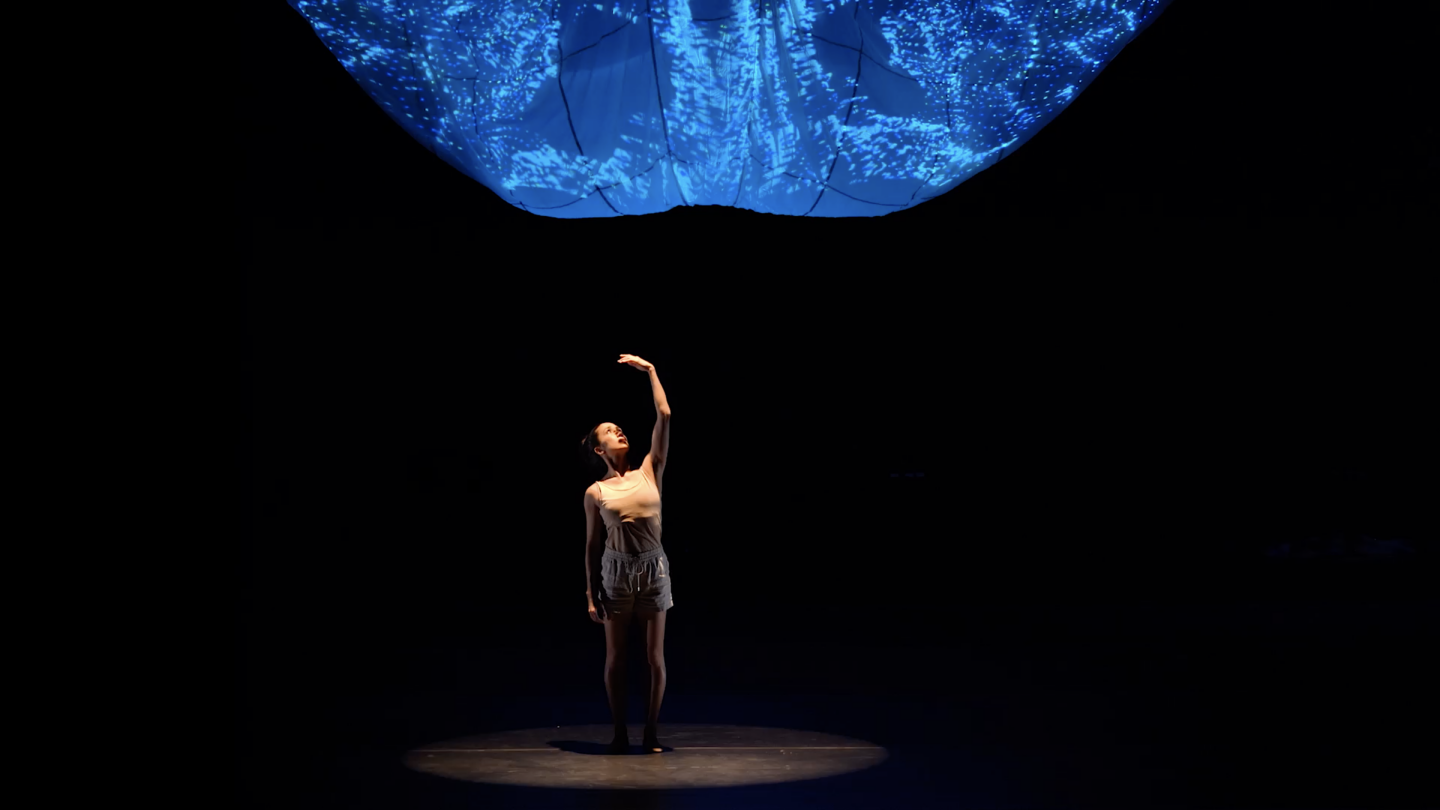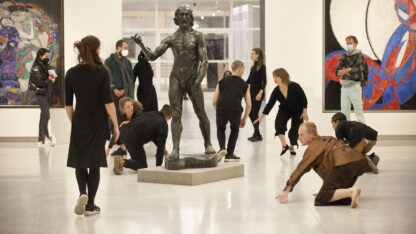'Step the Brain Along a Path' explores artificial intelligence and neuroethics through dance

Our experiences, self-perception and how we interpret the world around us all emanate from our brains. Interacting with the brain through artificial intelligence — that is, AI or other technology — can change our understanding. Terminus Modern Ballet Theatre partnered with Georgia Tech Arts, celebrated choreographer Troy Schumacher and the acclaimed new media artist Sergio Mora-Diaz to explore neuroscience and the ethics of intervention with technology.
The world premiere of “Step the Brain Along a Path” is on stage at the Ferst Center for the Arts this weekend, Sept. 9 and 11. Choreographer Troy Schumacher joined “City Lights” host Lois Reitzes via Zoom along with Dr. Christopher Rozell, professor of electrical and computer engineering at Georgia Tech, and Dr. Karen Rommelfanger, president and founder of the Institute of Neuroethics.
Interview highlights:
A brief introduction to the emerging field of neuroethics:
“Simply put, neuroethics explores the ethical, legal and social implications of neuroscience. So on a daily basis, I’m exploring things like how neuroscience and emerging neurotech will impact identity, personhood, privacy and, actually, pretty much life as we know it,” Rommelfanger explained. “It really emerged alongside the advances of science, not separately from them … Even with things like brain injury, memory loss that comes with that, or diseases like dementia, you hear an expression of loss of personal identity that you just wouldn’t hear with something like an appendectomy. Now we can create technologies that can help alleviate that kind of suffering in marvelous ways … and even possibly augment and enhance that brain function, to enable us to have really powerful lives.”
How a choreographer can express neurotechnology themes through dance:
“I’ve created this entire scenario in which people are tasked with thinking about how they would specifically choose to benefit from a technology like this, whether that’s improving your memory, improving your physical control, improving your emotional control, improving your focus and things like that,” Schumacher said. “Each character in this ballet has a very specific motivation for why they would want to interface with a computer, and the entire work is broken up into different sections where we follow these specific people.”
He went on, “One of them is trying to slow down their experience of time. One of them is trying to remember something. One of them is trying to improve their physical control. Another one is trying to improve their emotional control. And then finally, we get into this situation where these devices become, maybe, widespread, and then children might end up becoming involved in this process and in this task with surviving in society.”
New media artist Sergio Mora-Diaz’s interactive projections within the show:
“When everybody gets to the theater, there is going to be a link where they go, and they take a short quiz, where they basically anonymously provide their thoughts on some of these ideas, like, ‘How would you choose to benefit from technologies?’ And then it goes into a lot of ethical questions,” Schumacher said. “What Sergio is doing in the midst of these really beautiful abstract representations of the brain, and action potentials and data … is actually, the performance is visually directly impacted by the audience’s answers. So the audience gets to see how everybody else in the audience feels about certain topics, and then the audience gets to watch a specific dancer whose character feels a very specific way about these topics. So it’s all very beautifully integrated into a larger visual world.”
“Step the Brain Along a Path,” presented by Terminus Modern Ballet Theatre and Georgia Tech Arts, takes place Sept. 9 and 11 at the Ferst Center for the Arts at Georgia Tech. Tickets and more information are available at www.terminusmbt.com/events/step-the-brain-along-a-path.








